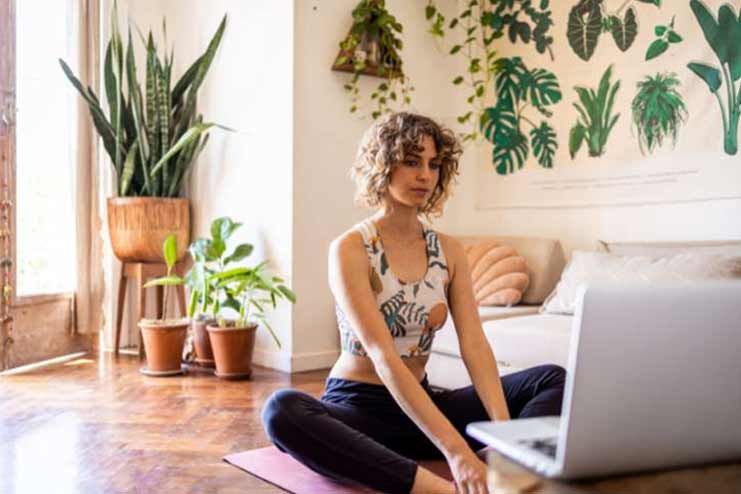Affiliate Disclaimer
Some links in this article are affiliate links. We may earn a small commission if you make a purchase through these links, at no extra cost to you. We only recommend products we find useful to our readersMeditation is a powerful technique to relax the mind, but many beginners need help to utilize it effectively. Typical roadblocks include impatience, restless thinking, and difficulty focusing, making it frustrating and challenging to continue your meditation practice consistently.
However, with the appropriate strategy, anyone can overcome these obstacles and develop a calm, focused practice that suits them.
This article explores practical tips for overcoming common meditation challenges and shares how to meditate correctly by making small, practical changes. By following these guidelines, you can improve your meditation practice and begin to experience the calm and focus that meditation brings.
Tip 1: Set Realistic Expectations

According to Angela Lumba-Brown, co-director of the Stanford Brain Performance Center and emergency medicine clinical associate professor, “meditation is an intentional practice to cultivate awareness using concentration.”
Many people start their meditation practice expecting to sit still for twenty or thirty minutes, which isn’t always possible for beginners. Instead, start with brief sessions of three to five minutes each day. You can extend the time as your concentration gets better. It’s also crucial to set realistic meditation goals. Starting small is one of the most crucial beginner’s meditation tips.
Meditation takes time to master, so giving up on it too soon might be tempting. But remember that patience is key—small steps lead to long-lasting routines. No matter how brief the session is, it moves you one step closer to becoming more attentive.
There’s no rush, let yourself advance at your own pace. Setting attainable objectives will allow you to stop worrying about the outcome and enjoy the ride. With regular practice, you’ll quickly realize how much simpler and more pleasurable meditation can be.
Tip 2: Create a Quiet, Comfortable Space

Our house ought to be a tranquil haven. It is a place that fills us with contentment and tranquility. Focus on yourself and get away from the stress and distractions of everyday life by creating a dedicated meditation space in your house.
The setup of your meditation room can help you concentrate and unwind. Pick a place that is calm and free from distractions or loud sounds. A calm setting, whether a nice nook in your house or an outdoor location, helps you achieve the correct frame of mind.
Your seating arrangement is equally vital. Find a position that supports your body and allows you to sit comfortably; cushions can help, but are not necessary. The idea here is to remain mindful and at ease, whether you want to do it on a cushion, yoga mat, or chair.
Add some plants, a candle, or oil diffuser, to curate a calming and serene space.
Tip 3: Use Guided Meditations

For those new to meditation, guided sessions are a great resource as they offer a point of focus and gentle guidance that can help you relax and let go of judgment of yourself. Some excellent guided meditations for novices are available on numerous apps and web portals. These recordings help you maintain concentration and direction throughout your session by giving precise directions.
One of guided meditation’s main advantages is that it relieves the stress of trying to quiet your thoughts on your own. An expert meditation teacher leads guided meditations in person, via live transmission, or by audio or video prepared in advance. Both beginner and seasoned meditators can benefit from guided meditations, but beginners might find the additional direction from a teacher particularly useful.
You can eventually transition to unguided sessions as you get more at ease, or you can incorporate both into your regimen for variation.
Apps like Headspace, Calm, and Insight Timer offer some of the best-guided meditations to help you stay on track.
Also, read: 20 Practical Ways to Stay Relaxed Through Out The Day
Tip 4: Practice Breathing Techniques

One of the simplest yet most effective strategies for enhancing meditation is paying attention to your breath. Breathing techniques for meditation use the natural pattern of breathing to promote calmness and tranquility in the body and mind.
By breathing deeply and deliberately, you de-stress and clear your mind.
Try well-known techniques, including the 4-7-8 breathing technique, which entails breathing in for 4 seconds, holding the breath for around 7 seconds, and exhaling for 8 seconds.
Another common technique is box breathing, which involves inhaling for four counts, holding for four counts, exhaling for four counts, and holding again. This breathing technique tries to ease anxiety or facilitate sleep.
Also, read: 6 Meditation Cushions for Comfortable and Supportive Practice
Tip 5: Embrace Imperfection and Mindfulness

It’s easy to become depressed about our flaws in a society that frequently demands perfection. Accepting imperfection, however, can be a useful strategy for happiness and personal development. Meditation can support us in developing a more loving and understanding mindset toward both ourselves and other people.
One of the most crucial meditation skills is letting go of the concept of perfection. When practicing mindful meditation, stopping your mind from wandering or regulating every idea is unnecessary. It’s more important to recognize when your thoughts stray and to refocus gently. It’s quite common for distractions to arise, so try not to get upset about them.
By adopting an approach that does not require perfection, you can remain at ease and take pleasure in the meditation practice. Accepting yourself is crucial; each session is a step toward mindfulness, not a control test. With repeated use, this way of thinking fosters a calm, stress-relieving meditation practice.
Conclusion
These meditation strategies can assist you in overcoming common obstacles to meditation,and transform your practice into a relaxing and consistent routine. These techniques include having a tranquil setting, beginning with a bit of time, using guides, mastering breathing, and accepting imperfection. Be patient and enjoy the process as you develop the meditation practice tailored to your needs. Remember that meditation is a journey.
References
- https://www.healthshots.com/how-to/tips-to-practise-meditation-properly
- https://medium.com/@Drshahbaz/unable-to-meditate-properly-try-5-tips-to-overcome-the-challenges-5e25e3612401
- https://www.headspace.com/meditation-101/trouble-meditating
- https://www.mindful.org/overcome-these-five-common-obstacles-to-meditation
- https://www.cnet.com/health/mental/anyone-can-meditate-with-these-5-foolproof-tips
- https://stanfordmag.org/contents/what-happens-when-you-meditate
- https://www.ronitbaras.com/emotional-intelligence/personal-development/the-expectations-paradox-mindfulness-is-the-cure
- https://www.ncbi.nlm.nih.gov/pmc/articles/PMC10130585
- https://www.vox.com/2015/8/27/9214697/meditation-brain-neuroscience
- https://profiles.stanford.edu/angela-lumba-brown
- https://www.thegoodtrade.com/features/meditation-room-ideas
- https://www.lionsroar.com/how-to-create-a-meditation-space
- https://camillestyles.com/design/meditation-room-ideas
- https://www.mindful.org/category/mindful-skills/meditation/guided-meditation
- https://choosemuse.com/pages/guided-meditation?srsltid=AfmBOooDR39cJSKMOragNFyh9WtxGibJ5mvKGX0bEzDB8gcj1fk2ZOXA
- https://www.mindful.org/how-to-meditate
- https://www.calm.com
- https://insighttimer.com
- https://www.headspace.com
- https://www.everydayhealth.com/alternative-health/living-with/ways-practice-breath-focused-meditation
- https://www.mindful.org/a-five-minute-breathing-meditation
- https://www.healthline.com/health/breath-work-meditation
- https://www.medicalnewstoday.com/articles/324417
- https://www.insightmeditationcenter.org/transcribed-talks/embracing-imperfection
- https://www.innerdimensiontv.com/programs/embracing-imperfection
- https://insighttimer.com/heartandsoulmeditation/guided-meditations/embrace-your-imperfections-meditation_1
- https://www.viarohealth.com/news-resources/the-power-of-daily-meditation-embrace-imperfection-and-cultivate-inner-growth




















